5 Green Practices for Retailers That Work
Social responsibility and sustainability are a top-of-mind issue for the retail industry today.
As consumers clamor for greener ways, the industry is simultaneously developing what an ethical future looks like. From building eco-friendly stores and supply chain networks, to rethinking what’s sold in the first place and how it’s sold, the future is being forged now.
RIS research finds 51% of retailers rank the importance of brand values, such as sustainability and ethically sourced materials, as important to a retailers’ customer base. Only 15% say it’s not important. Meanwhile, CGS found a majority of U.S. Gen Z shoppers (60%) and Millennials (59%) are in support of a national/global sustainable law.
[See also: Retailers Ranked ‘Most Sustainable' in 2022]
As retailers implement their own company goals for sustainability, RIS looks at five cutting-edge, green practices retailers are implementing to be more eco-friendly. As you look to integrate best practices in your retail operations, consider these five areas:
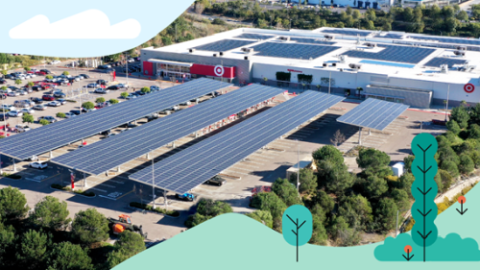
Building Eco-Friendly New Stores
Building the store of the future is one place to start in the path to sustainability. To this end, Target and Amazon have both opened environmentally friendly store models and are seeking net zero certifications for the locations.
An Amazon Fresh store in the greater Seattle area is seeking the International Living Future Institute’s (ILFI) net zero carbon certification, while Target’s retrofit Vista, CA, store has applied for ILFI’s net zero energy certification. Target said it will test multiple innovations to reduce the building’s emissions and the store will inform the retailer’s investments in new stores and remodel programs that help guide the retailer’s efforts to achieve its sustainability goals. Amazon will be able to measure the real-time impact of its store’s upgrades via a system built by Amazon Web Services’ Professional Services Sustainability Practice, the retailer said. It will look to apply what it learns to future Amazon stores and buildings, helping accelerate its path to net-zero carbon by 2040 as part of The Climate Pledge.
Target’s store sports features like 3,420 solar panels across its roof and newly installed carport canopies. It will power its HVAC heating through rooftop solar panels, instead of natural gas.
[Learn more: 3 Common Hurdles to Solar Adoption and How to Overcome Them]
The Amazon Fresh store boasts, among other eco-friendly features, steel byproducts in the concrete floor to reduce the embodied carbon—the carbon associated with the manufacturing and installation of the flooring—by nearly 40% compared to a standard concrete floor.
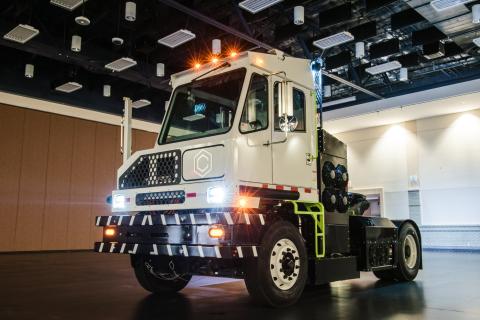
Emissions Reduction
Reducing emissions is another hot environmental topic. Walmart announced earlier this year, it’s now more than halfway toward its goal to reduce or avoid 1 billion metric tons (a gigaton) of greenhouse gas (GHG) emissions from product supply chains by 2030.
Walmart’s goal to reduce GHG emissions was set through its Project Gigaton initiative, which launched in 2017. With over 4,500 of Walmart’s suppliers engaged since the launch, and suppliers reporting a cumulative total of more than 574 million metric tons of emissions reduced or avoided, Project Gigaton continues to make progress as one of the largest private sector consortia of its kind, said Walmart.
On the transportation front, Walmart announced earlier this month it will be focusing specifically on its last mile delivery fleet and Class 8 transportation — areas uniquely positioned for innovative solutions.
But it’s not as simple as flipping a switch, said the organization. Walmart’s approach is multi-pronged, as it needs to overhaul a transportation system that accounts for 12,000 drivers, 10,000 tractors, and 80,000 trailers driving 1.1 billion miles per year. In 2020, the fleet accounted for 24% of the company’s Scope 1 emissions.
Walmart will be looking to deploy vehicles powered by compressed natural gas (CNG), moving away from Diesel. With a comparable range of around 700 miles, the switch should provide measurable emissions benefits. It also plans to be an early adopter of using liquid hydrogen to fuel its forklifts across its grocery distribution centers. Compared to battery-electric, hydrogen provides a greater range (around 400 miles), requires less time to refuel, and is much lighter than its counterpart, allowing the company to haul additional freight. The retailer has also already been running zero emissions electric yard trucks over the last year in its distribution centers, but it’s looking to continue pairing the trucks with renewable energy like wind, solar, and hydro powers to achieve true 100% emissions reduction.
When it comes to deliveries, more than three-quarters (86%) of consumers are willing to delay e-commerce deliveries for the sake of improving sustainability if given an incentive to do so, the 2022 Consumer Sustainability Survey revealed.
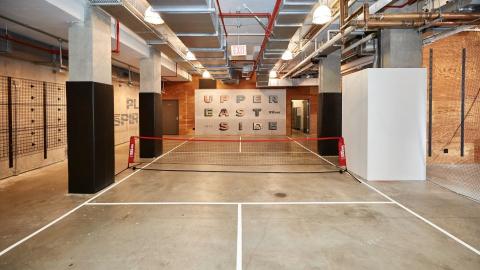
Rental and Repair
While rental is nothing new in retail, the categories available for rent and resale are expanding and some retailers are turning to repairing items to be more eco-friendly.
Last year, for example, The Home Depot made rental easier when it launched new "Rent Online, Pick-up In Store" technology, offering things like demolition and landscaping tools for customers to reserve and rent online up to 30 days in advance. After piloting online reservations in the Atlanta, Charlotte and Houston markets, The Home Depot made the system available to rental customers across North America.
Wilson Sporting Goodsrecently opened an Upper East Side of Manhattan store, which features Wilson's first-ever "Equipment Room," where shoppers can rent select product to playtest before purchasing. Customers will be able to leverage this unique program for sporting goods needs across baseball, softball, tennis, pickleball, basketball, football, volleyball and more. Rental fees range from $5-$10 per day based on product, and all rental fees will be taken off the final price if purchased.
IKEA U.S. began giving its IKEA Family members the opportunity to sell back their gently used IKEA furniture in exchange for an IKEA store credit at participating stores. Following a successful pilot at the Conshohocken, PA, store in September, the retailer launched its Buy Back & Resell service at in 33 stores across the U.S. from November 1 – December 5, 2021. It then further expanded the program this Spring, making it a permanent feature in all 37 stores across the U.S. Customers get store credit, and the furniture is resold in the store’s as-is department.
Meanwhile, Neiman Marcus hopes to extend the life of luxury items through garment mending and alterations, shoe and handbag restoration, resale with Fashionphile, and clothing donation with Give Back Box. The department store retailer extended the lives of over 350,000 luxury items through alterations, restoration, and resale in FY21, it said in its 2021 ESG Report. The retailer reported that at Neiman Marcus, customers who engage with alterations spend 13% more than those who don’t.
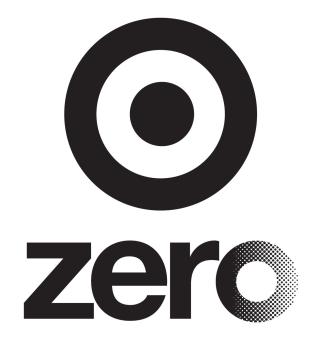
Educating Shoppers about Green Initiatives
With an overload of green information out there, one of the simplest things retailers can do to help consumers is to communicate with and educate them on green efforts. In that vein, Target launched a new initiative, Target Zero, earlier this year.
The initiative — with CGs like Burt’s Bees, PLUS, Pacifica, and more already signing on — communicates to consumers the products and packaging that are designed to be refillable, reusable, or compostable, or are made from either recycled content or materials that reduce the use of plastic. Items that fall within these categories will have a Target Zero icon on shelves in-store, and through a dedicated online experience. Target will be featuring signage across its beauty, personal care, and household essentials categories — with plans to expand into others.
“By making it easier for our guests to identify which products are designed to reduce waste, Target Zero helps them make informed decisions about what they purchase and advances a collective impact across our brand partners, our product shelves, and within our homes and communities,” said Amanda Nusz, senior vice president of corporate responsibility and president of the Target Foundation.
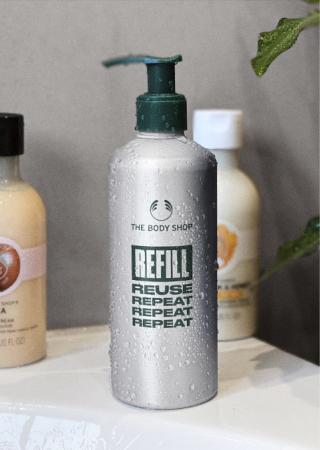
Rethinking Packaging
Finally, retailers are continually rethinking how packaging and products can support a greener future.
Paper packaging is one trend sister publication Consumer Goods Technology is seeing. L.O.L. Surprise! products will now have compostable, paper-based spherical packaging. The brand owned by privately held toy company MGA Entertainment, Inc. is offering these products for two new characters — Earthy B.B. and Grow Grrrl — available exclusively at Walmart. Keurig Dr Pepper is developing a recyclable and compostable paper bottle that it will test in the United States. The company is teaming with Cologne, German-based packaging manufacturer PAPACKS for a bottle that uses fiber and organic materials, rather than the plant-based PET plastic or sustainably sourced pulp with polymer lining that’s found in some other paper-based packaging. The prototype of the new bottle is expected later in 2022, and KDP will pilot the packaging in select products, including water, juices, and carbonated beverages.
As part of Starbucks’ “Planet Positive,” framework, the coffee giant recently launched efforts to reduce single-use cup waste through a new reusable cup program. At SODO 8, the Starbucks café located in Starbucks Seattle office, 100% of beverages served will be in reusable cups. Customers have the option of bringing their own cup or participating in the Borrow-a-Cup program. When a drink is served in a Borrow-a-Cup, customers return the cup to one of the kiosks located around the building and in the kitchen areas. The cup is then professionally washed and sanitized, ready to be used again. These cups are100% recyclable and, due to the innovative material, they do not require a cardboard sleeve, further reducing waste. The company said while the program is a test, Borrow-a-Cup is anticipated to be a permanent feature at the SODO 8 store. “We’re interested in feedback from store partners (employees) about how well Borrow-a-Cup fits into existing operations and what adjustments are required.”
Last year, The Body Shop committed to an ambitious packaging goal as well: in five years, the majority of its stores globally would be fitted with refill stations. The refill program has now expanded to stores across the U.S., and The Body Shop expects 49% of all U.S. locations to be fully equipped by the end of the year. Since April, the company has rolled out refill stations across 400 stores globally, saving over 3.7 tons of plastic — equivalent to 170,000 plastic bottles, it said. Another 400 refill stations are planned for 2022, with the aim of saving 25 tons of plastic and helping to prevent up to 5lbs of CO2 from entering the atmosphere.

